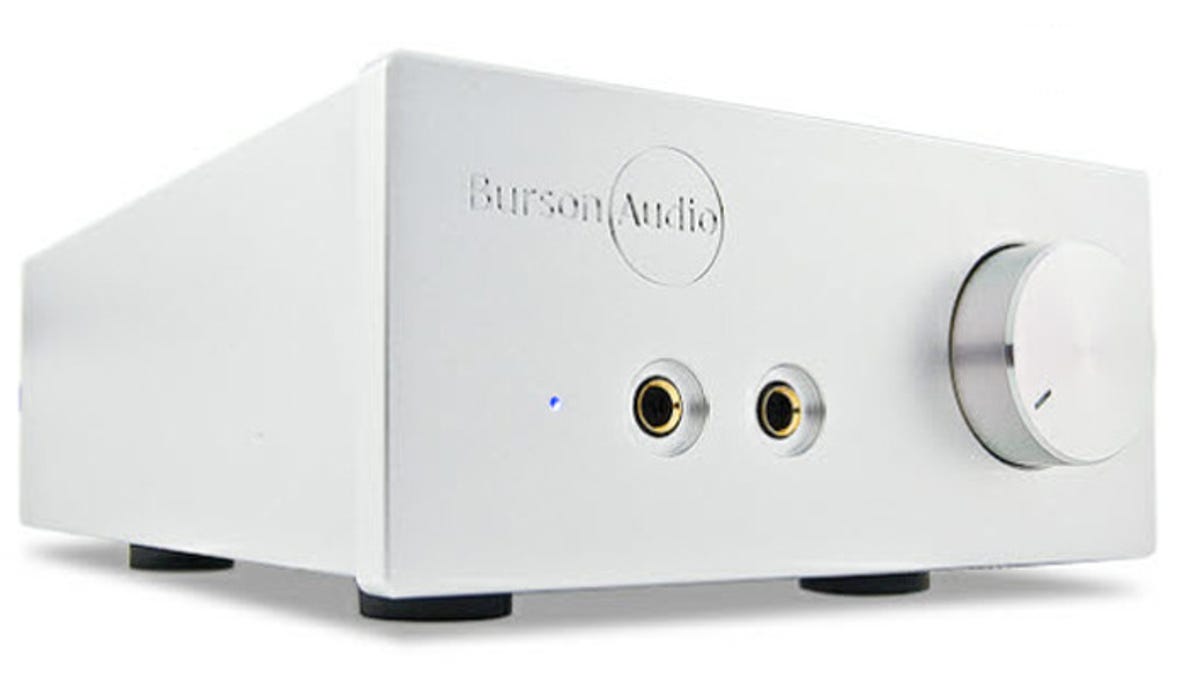Great headphones need a great amplifier to sound great
The Burson Audio HA-160 headphone amplifier will make your headphone sound better than you thought it was.

If you've invested in a set of really high-quality headphones--and you're plugging them into a headphone jack on your receiver or computer--you ain't heard nothing yet. The sound may be pretty good, but the weak link is the "good enough" headphone amp built into the receiver or computer sound card.
Dedicated headphone amps, like the Burson Audio HA-160 take the high road and are built like bona-fide high-end audio amplifiers. Little amplifiers to be sure; it doesn't take a lot of power to drive a headphone, but the quality of the power is something else again. Burson Audio is based in Melbourne, Australia.
I love the HA-160's understated design; the silver anodized-aluminum chassis feels nice and solid. Up front you get two headphone jacks: one for use with low-impedance (15-150 ohms) headphones, and one for high-impedance headphones (150-500 ohms). The large, machined-aluminum volume control is a little unusual; it's a "stepped attenuator." That's a big draw for serious audiophiles, stepped attenuators have matched sets of resistors that sound better than more commonly used continuously variable volume controls.
Most solid-state headphone amps, including a lot of high-end ones, use off-the shelf "opamps," integrated circuit chip sets, but the HA-160 uses circuits developed by Burson Audio, and it features discrete circuits with resistors, capacitors and transistors. That's a more labor-intensive way to build amps, but there's no other way to build true high-end designs.
What does the HA-160 sound like? Nothing at all. Switching back and forth between my Onkyo TX-SR805 receiver's headphone jack and the HA-160 was a study in contrasts. The TX-SR805 certainly didn't sound bad on its own, but the clarity gains with the HA-160 were dramatic. The sound was far more vivid, and the "spaces" between the instruments and vocals were in sharp relief. Bass was also clearer with the Burson; the TX-SR805 sounds softer and veiled by comparison.
I next compared the HA-160 with my reference headphone amp, the Woo Audio WA6-SE ($1,050). It was a closer match, but there were still very significant differences between the two amps. Listening to Peter Gabriel's new "Scratch My Back" CD, the WA6-SE was sweeter and more laid-back than the HA-160.
The orchestral accompaniments were richer, but the HA-160 was more immediate, it sounded much clearer, as if there was nothing between the music and my ears. All of my listening up to this point was with the Beyerdynamic Tesla T1 headphone ($1,295), which is one of the very best headphones I've ever heard (full review is in the works).
Which sounded better, the WA6-SE or HA-160? That's a subjective call; the WA6-SE is a vacuum-tube design, and it sounds like a tube design. Tubes are generally warmer, fuller-sounding components, and if you want that effortless musicality, get a tube amplifier.
But then you have to also consider the headphones you're going to use with this or any headphone amp. My Grado RS-1 headphones are brighter than the Beyerdynamic T1, and I like the way the WA6 SE sweetened the Grado's high frequencies somewhat. So I wouldn't use the HA-160 with Grados, but the situation reversed with my trusty old Sennheiser HD-580 headphones. Their mellower balance clicked with the HA-160.
With the HA-160 ($699) you hear far greater resolution of fine detail, it's probably closer to the true sound of the recording. I'll also add that it's the first solid-state headphone amplifier to floor me. It supplied remarkably transparent sound.
My HA-160 sample was loaned by 32 Ohm Audio, a great source for headphones and headphone-related gear, and they're in Portland, Ore. I will be reporting on 32 Ohm Audio in a few weeks.

